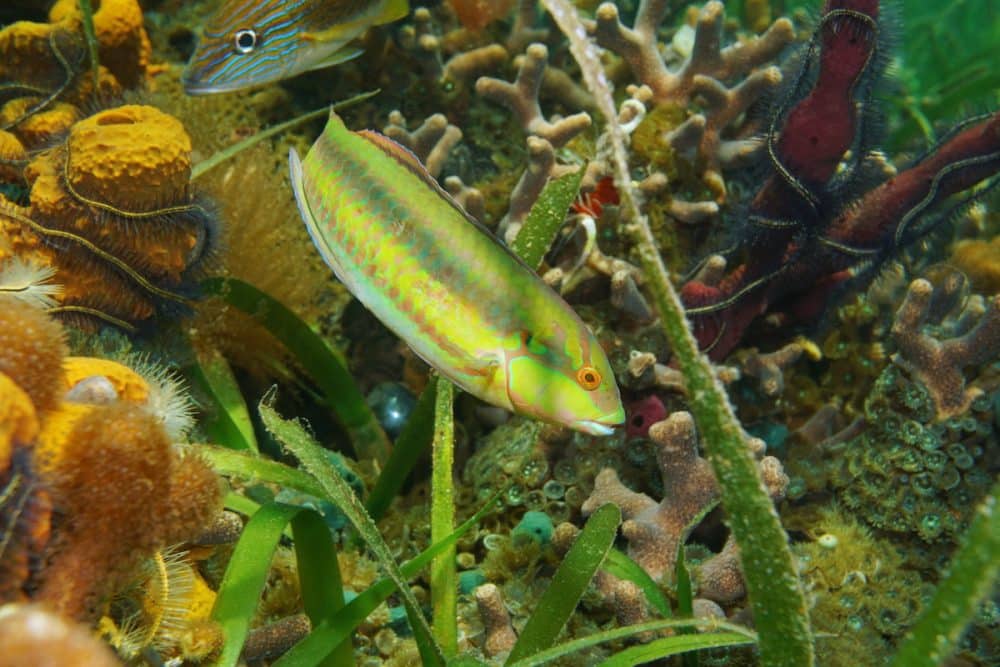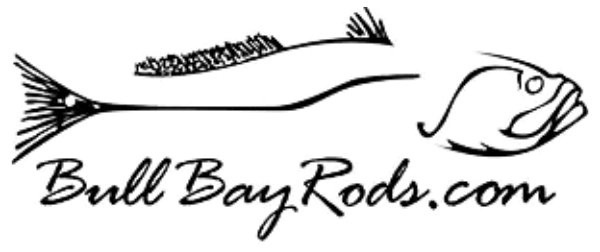
Not many people have so you are not alone. The Halichoeres Bivittatus is a species of wrasse native to shallow, tropical waters of the western Atlantic Ocean.
Without sounding rude or inappropriate, the Halichoerer Bivittatus also goes by several other names:
- Slippery dick,
- Sand-reef wrasse, and
- Slippery dick wrasse
Why is it called Slippery Dick?
There are several suggested reasons why this fish was given the name of slippery dick:
- The name is said to have originated from the ease with which this fish slips out of one’s hand when one seems to be sure of him.
- This fish can escape from the nets and pounds, or the hand, by the aid of its quickness in moving and its slippery surface.
- Small eels typically are very slippery, but they are easy in comparison to hold in the hand. This fish can slip out between the fingers of a tightly closed fist.
- They have a thin, elongate body and their average length is 18 cm or 7 inches.
Appearance
This fish looks similar to Neapolitan ice cream. From end to end the color is a narrow band of pink and chocolate and other delicate tints. Pink streaks, even more delicate than on the body, ornament its tail. The colors vary between juvenile to adult. Going from juvenile to adult wrasses dramatically alters their color and body shapes.
Length – 18cm or 7 inches
Habitat
These fish are typically found singly or in pairs or groups circling reefs, seagrass beds and sandy areas.
The slippery dick wrasse is widespread throughout the tropical and subtropical waters of the western Atlantic Ocean and the Caribbean. These fish can be located from Bermuda and North Carolina to Brazil. They are also in the Gulf of Mexico and the Caribbean Sea area.
These fish are grazers during the day that cruise around just above the surface of the coral. They like to snoop into crevices looking for algae, worms, and small crustaceans.
During the day, these slippery wrasses are always on the go. But they are the first to go to bed and the last to rise. The smaller wrasses dive below the sand to sleep, and larger wrasses wedge themselves in crevasses.
Diet
This species feeds on hard shell invertebrates, including crabs, small fishes, sea urchins, and ophiuroids, polychaetes, and gastropods. Wrasses graze at the bottom taking in a variety of snails, worms, crabs, shrimps, and eggs with their small protruding teeth. They ground down any hard coats or thick shells by their pharyngeal jaws and the delicacies inside digested.
Superstitious
The islanders of the Bermuda Islands have a superstitious belief that they will lose all of their hair if they eat this fish.
Fishing in Tampa Bay Waters
There is excellent fishing all along the pristine flats from Clearwater, Florida to Tarpon Springs and all areas surrounding the Tampa Bay Waters. Fishing along some of the most beautiful beaches in Florida to the gorgeous backwater mangrove shorelines targeting some of the hardest pulling and strongest fish that swim in these salty waters. Three Rooker Island, Caladesi Island, are great spots to fish too.
Captain Brian Mathay
Looking for a fun and exciting day on the water? Look no further than Clearwater Inshore Fishing owned and operated by Captain Brian Mathay. Book your fishing charter today or call at (727) 667-8291.







